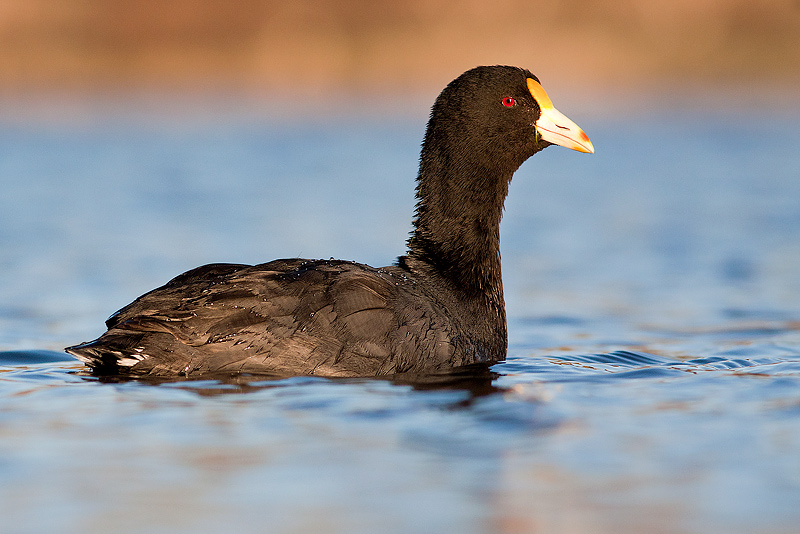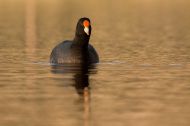White-winged Coot
Gallareta de Alas Blancas
Fulica leucoptera
Length: 370mm. Sexes alike. Bill lemon yellow; frontal shield lemon yellow which may turn orange yellow; iris red; head and neck black; back, scapulars, uppertail coverts and rectrices slate grey; breast, flanks and abdomen slate grey lighter on the abdomen; undertail coverts white with blackish centre; wing coverts as back; primaries and secondaries brownish grey; bend of wing white as well as a thin white band on outer vexillum of the outer primary; secondaries have white terminal band; underwing coverts and axillaries grey; legs with tarsus olive green, the front portion greyish, toes are olive green with greyish lobes, bare part of tibia shows a yellowish spot. Juveniles: lighter and paler coloration than adult; throat and foreneck is whitish, bill is dark olivaceous and shield reduced. Chicks are born covered with a coat of black down, the forehead, crown and eye patch bare with bright colours, rest of head and neck shows downy feathers which are orange at the tip of the quill. Similar species: smaller than other coots, it is recognised by the colour of the bill and the frontal shield, which has a round tip, the white spots on the wing are scarcely visible when the wing is flexed but diagnostic when the wing is spread; the white undertail coverts are larger than in the Red-gartered Coot. Habitat and behaviour: very common. Its habits and customs are similar to those of the other coots it associates with in our region. Highly gregarious, often having territorial disputes, with squabbles and chasing. It lives in ponds, marshes, slow-moving streams, temporarily flooded fields where they are the first to appear. They inhabit watercourses with or without aquatic vegetation. When swimming they pump head back and forth. Better flier than other coots upon impending danger. Nest is located among reed beds or other emergent marshy vegetation. A floating nest is built with reeds and other plants. Clutch size is up to ten eggs, occasionally as many as twelve, brownish buff, completely mottled with dark brown spots. Range: distributed throughout most of the country except the Puna high plateau and Misiones. In Patagonia it can be found from Neuquén and Río Negro to Tierra del Fuego.
Illustrated Handbook of the Birds of Patagonia
Kindless: Kovacs Family
|










